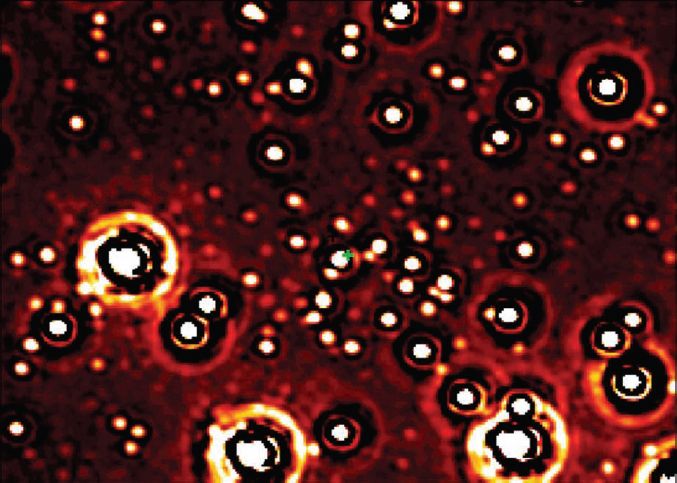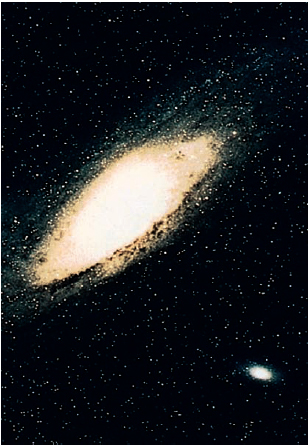
What monster lies at our galaxy’s center?
The answer is in this lesson.
This is an image of the stars near our Milky Way galaxy’s center, which is marked with a small cross. Note that nothing shows up exactly at the center, but slightly off center (at the 8:00 position) there is a small circle. That circle is the image of a star known as S2. The other circles are also images of stars (the halos around them are artificially produced by the method of processing the images). Most stars in our galaxy move so slowly that we cannot actually see them move relative to one another, not even over a lifetime of observations. However, S2 is very different — we can see it move. In fact, it is moving so rapidly that it makes a complete trip around the Galaxy’s center in only 15.2 years. There must be something huge at the center, yet we see nothing there.
What Is Physics?
One of the long-standing goals of physics is to understand the gravitational force—the force that holds you to Earth, holds the Moon in orbit around Earth, and holds Earth in orbit around the Sun. It also reaches out through the whole of our Milky Way galaxy, holding together the billions and billions of stars in the Galaxy and the countless molecules and dust particles between stars. We are located somewhat near the edge of this disk-shaped collection of stars and other matter, 2.6 × 104 light-years (2.5 × 1020 m) from the galactic center, around which we slowly revolve.
The gravitational force also reaches across intergalactic space, holding together the Local Group of galaxies, which includes, in addition to the Milky Way, the Andromeda Galaxy (Fig. 13-1) at a distance of 2.3 × 106 light-years away from Earth, plus several closer dwarf galaxies, such as the Large Magellanic Cloud. The Local Group is part of the Local Supercluster of galaxies that is being drawn by the gravitational force toward an exceptionally massive region of space called the Great Attractor. This region appears to be about 3.0 × 108 light-years from Earth, on the opposite side of the Milky Way. And the gravitational force is even more far-reaching because it attempts to hold together the entire universe, which is expanding.
This force is also responsible for some of the most mysterious structures in the universe: black holes. When a star considerably larger than our Sun burns out, the gravitational force between all its particles can cause the star to collapse in on itself and thereby to form a black hole. The gravitational force at the surface of such a collapsed star is so strong that neither particles nor light can escape from the surface (thus the term “black hole”). Any star coming too near a black hole can be ripped apart by the strong gravitational force and pulled into the hole. Enough captures like this yields a supermassive black hole. Such mysterious monsters appear to be common in the universe.
Although the gravitational force is still not fully understood, the starting point in our understanding of it lies in the law of gravitation of Isaac Newton.

Fig. 13-1 The Andromeda Galaxy. Located 2.3 × 106 light-years from us, and faintly visible to the naked eye, it is very similar to our home galaxy, the Milky Way.
Leave a Reply